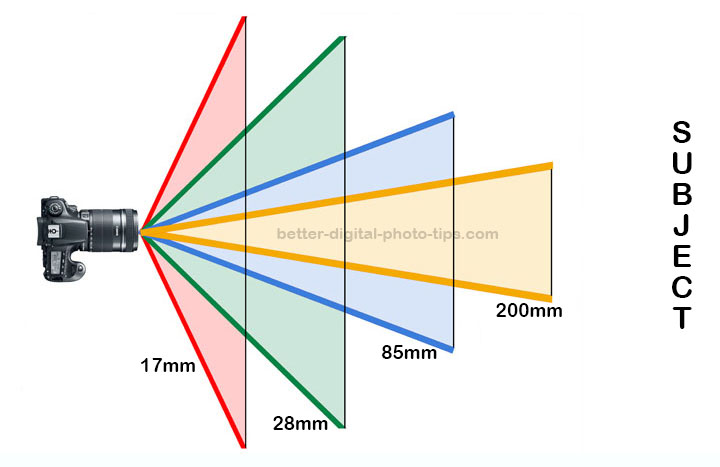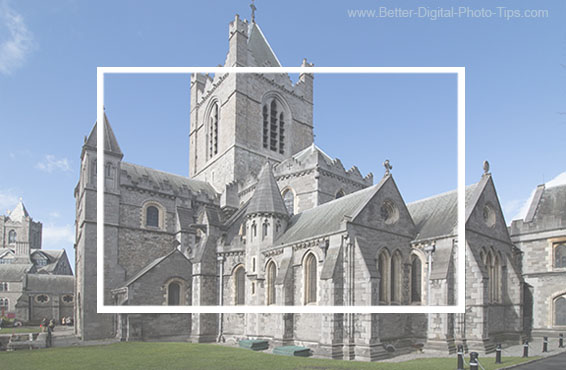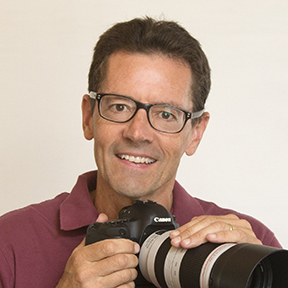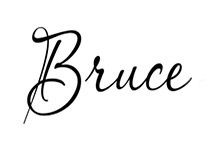HOW TO POSTS: LIGHTING AND COMPOSITION
Best Focal Length Lens For Travel Photography
it's a question that has an answer that not everybody agrees with. Photographers want to know what focal length lens is the right one to take with you for shooting travel photos.
This post is a helpful guide to understanding lens focal lengths along with weaknesses and strengths of various lenses for travel photography.
 Focal length comparisons.
Focal length comparisons.Shorter lenses (17mm and 28mm) have a wider angle of view than longer lenses.
Longer lenses shoot narrower angles, visually bringing the subject closer.
Before diving into my recommendation for the best travel lens take a look at the illustration above.
My Personal Recommendation
As you'll see if you continue reading there's much more to know about advantages and disadvantages of using different focal lengths. But if you're in a mad rush for the quick answer, here are my two recommendations for the single best travel lens.
FULL FRAME. For cameras that have the larger sensor (same as a 35mm film negative) the 24-105mm makes for a great travel lens. You get excellent image quality and a 4x zoom range from very wide to moderate telephoto. Keeping your equipment load to a single versatile lens makes sense when you're traveling.
CROP SENSOR. For cameras with a smaller (known as APS-C, Nikon calls it DX) sensor, the 18-135mm focal range is ideal. The zoom range of 7.5X from wide to telephoto makes it very versatile to capture all of your travel photos. Crop lenses are smaller, lighter, and more affordable than full-frame lenses and are to be used on crop cameras.
These recommendations are on focal length and are good for any camera/lens brand and for both DSLRs and mirrorless cameras.
 Smaller sensors have a "cropped" view of the scene compared to the wider full-frame.
Smaller sensors have a "cropped" view of the scene compared to the wider full-frame.Crop sensor cameras need wider lenses (shorter mm) to capture the whole scene
24-105mm
The range of focal lengths with this lens is just about perfect. I've been using one of the 24-105mm lenses since I first started shooting with a full frame DSLR.
You get to choose between the even smaller and affordable 24-105mm "Kit" lens or the pro f/4.0 "Pro" version of the 24-105mm lens.
18-135mm
By far this is the best choice if you want one lens with reasonable performance and simplicity for your APS-C crop camera. There are smaller zooms, but their zoom range of 17-55mm is pedestrian.
Prime Versus Zoom
Here are the pros and cons of using a prime lens or a zoom lens for your travel photography. First we start with the advantages and disadvantages of shooting you travel photos with a zoom lens.
Zoom Travel Lenses
PRO:
VERSATILITY. You can quickly change from shooting a portrait at telephoto and switch to a wide angle landscape with a twist of your wrist. No need to change lenses or change your position.
COVERAGE. A good standard zoom lens, like a 24-105mm, can cover 95% of typical photography subjects while traveling.
PROTECTION. Fewer lens changes means less chance of damage and less dust or moisture entering your camera body.
CON:
SIZE. Zoom lenses can be larger and heavier than prime lenses. That can add up to muscle fatigue if you're lugging around a heavy lens and camera for a few hours.
IMAGE QUALITY. There can be a slight compromise in sharpness that comes along with the complicated optics found in zoom lenses.
APERTURE. Zoom lenses don't open up as wide as prime lenses. Their maximum apertures is usually not as good as most prime lenses. This affects low-light shooting and depth of field background blur.
PRIME Travel Lenses
PRO:
SIZE. Prime lenses are smaller and lighter. That's a big plus when you want to pack light when traveling.
IMAGE QUALITY. Simpler lens design gives you better image quality and less barrel or pincushion distortions.
APERTURE. Prime lenses have wider maximum apertures. That gives you possibilities of using a faster shutter speeds, better low-light shooting, or lower (high IQ) ISO settings.
CREATIVITY. Shooting with just one focal length forces you to move around and compose your images more carefully.
CON:
COMPOSITION LIMITS. Without a zoom function you can't adjust how you frame in your subject without physically moving.
FOCAL LENGTH. You can't change focal lengths without changing lenses. Carrying a variety of lenses with different focal lengths defats the space saving advantage of individual prime lenses
If you decide you like the advantages of shooing with a single prime lens a 35mm lens is the most popular for full-frame cameras and a 24mm prime lens is just right for a crop-sensor camera.
Summary
The direction you choose to take depends on your personal priorities. Do you want to be fully equipped to shoot the largest variety of subjects, travel lightly, or something in between.
You can read the lens reviews for your brand of camera and you learn more about what to look for with your travel lens.
Feel free to leave me Feedback about this post.
As an Amazon affiliate I may receive a small commission from qualifying purchases, at NO added cost to you.


ABOUT BRUCE LOVELACE
Bruce is the publisher of this website. He is the author of the book "Improve Your Photography Instantly." Read more on Bruce on his Bio Page. He's been known as The Traveling Photographer ever since 1994. Read more about this website.
View some of Bruce's photos on Instagram. Visit the Facebook Page. Watch him on YouTube. Bruce runs photo workshops for kids and adults, and provides one-on-one photography coaching.
Digital Photography Education Location on Google My Business














